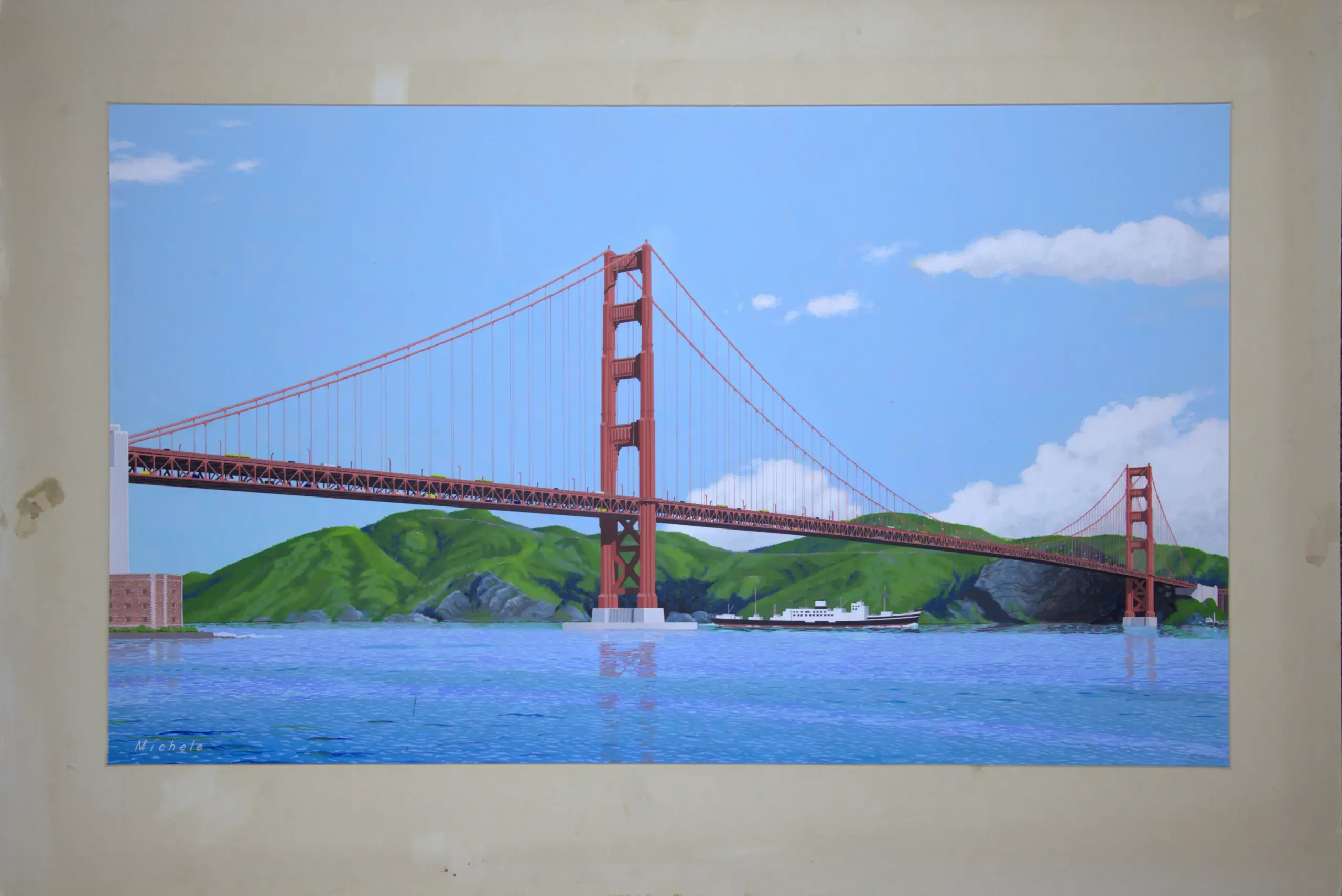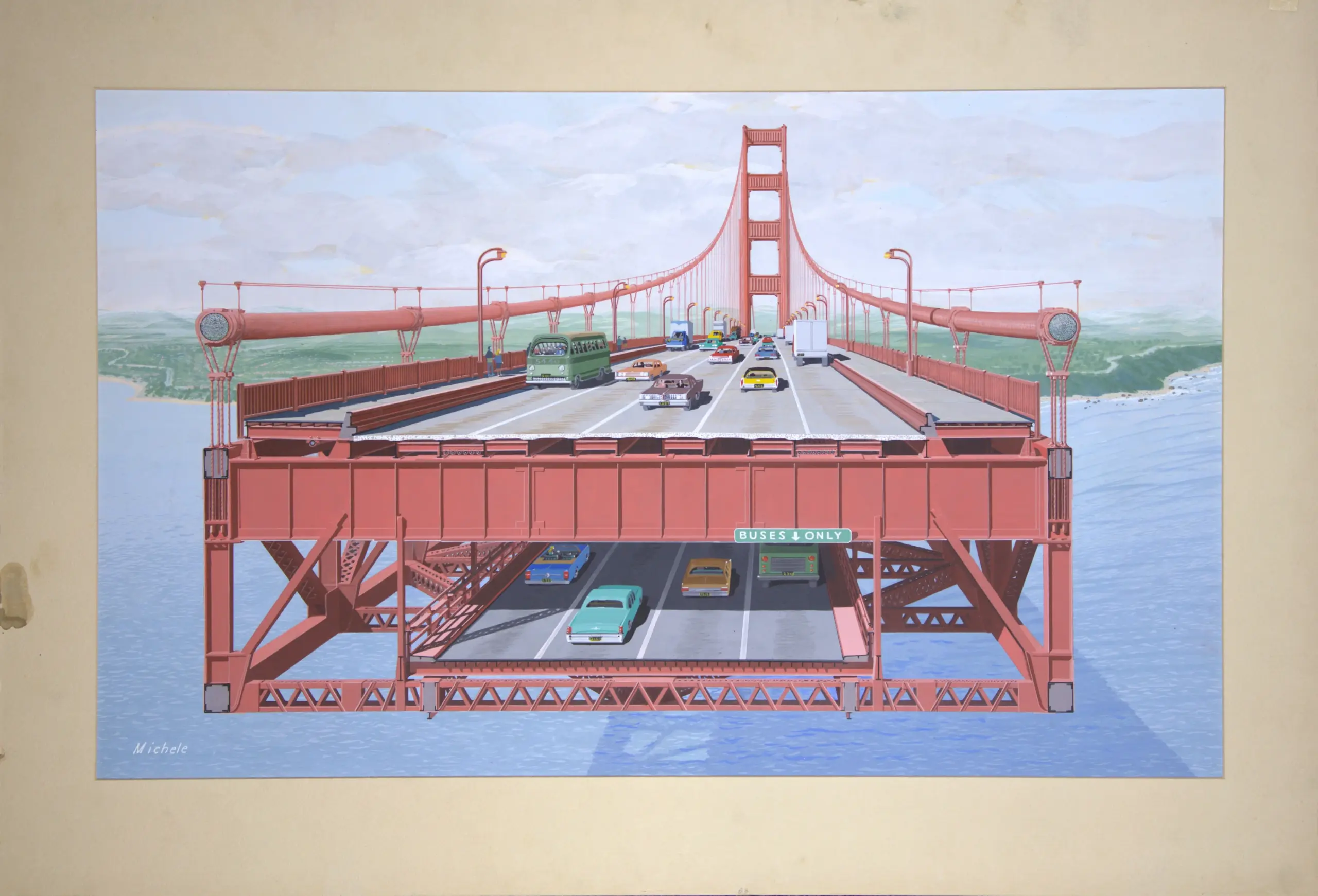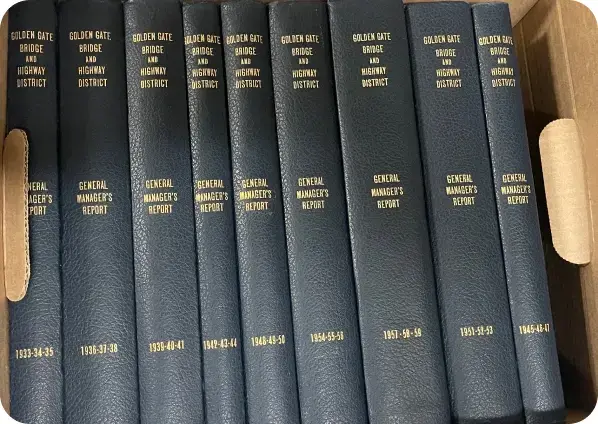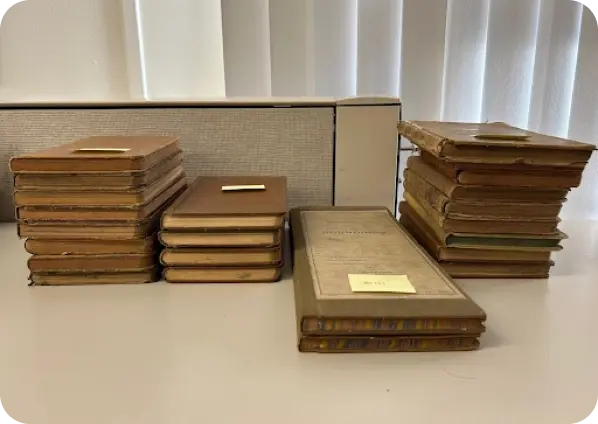
Golden Gate Bridge Archives Digitized by eRecordsUSA
eRecordsUSA is honored to be entrusted with the digitization of the Golden Gate Bridge’s historical archives, one of the most iconic engineering marvels in the world. This monumental initiative involved the careful scanning and preservation of decades-old documents, drawings, blueprints, and maintenance records, ensuring their longevity for future generations.
By applying state-of-the-art document scanning technologies and meticulous quality control, eRecordsUSA converted fragile paper records into fully indexed, high-resolution digital files.
This project is a testament to eRecordsUSA’s commitment to safeguarding America’s architectural heritage through digital innovation. Serving organizations across San Francisco, California, and beyond.
Whether preserving history or modernizing critical infrastructure, eRecordsUSA delivers unmatched expertise with precision and care.
Project Profile
- Client: Golden Gate Bridge, Highway & Transportation District
- Location: San Francisco, California
- Industry: Government / Infrastructure / Historical Records / Museum Grade / Archival, Rare & Delicate Records
- Document Types: Engineer field books, General Manager Meeting Reports / handwritten construction logs, large-format painting, blueprints, & sketches
- Period Covered: Over 100 years of archived documentation
- Primary Goal: Preserve and digitize irreplaceable historical records for research, public access, future museum, and institutional legacy
Challenge
- Aging documents & bound books with fragile paper, fading pencil marks, and oversized formats
- Non-destructive digitization required—no disbinding or exposure to strong lights, NARA handling guidelines for fragile materials.
- Documents included a mix of formats: bound volumes, fold-outs, and loose blueprints.
- Metadata and structure needed to align with NARA archival standards
- The project required full chain-of-custody, cleanroom-level handling, and OCR compatibility
Solution
- Custom scanning strategy using overhead cradle scanners and flatbed imaging
- Digitization at up to 400 DPI, with OCR/ICR applied for searchable outputs
- Preservation of document sequence, tabbed hierarchy, and blank pages
- Output in PDF, PDF/A, TIFF, and metadata-indexed file structures
- Final deliverables securely packaged for digital archive ingestion and long-term access
Why Was The Golden Gate Bridge Historical Digitization Project Important?
As a symbol of American engineering, the Golden Gate Bridge holds structural significance and historical depth. Built between 1933 and 1937, this San Francisco landmark generated a vast collection of engineer field books, managerial reports, and technical blueprints over the decades.
Preserving these records through digital archives was critical, not just for compliance but also for public education, historical research, and long-term institutional knowledge. eRecordsUSA was selected to lead this digitization initiative, reflecting our expertise in historical digital archives and handling government-grade archival documents.


What Challenges Did eRecordsUSA Face in Digitizing NARA-Level Archives?
Digitizing historical materials of this scale meant solving several key challenges:
- Mixed media formats: Engineering plans, handwritten notes, negatives, blueprints, bound manager meeting minutes, books
- Non-destructive requirements: Bound volumes could not be unbound or cut open
- Metadata alignment: Needed to match archival systems like those of the National Archives and Records Administration (NARA)
- Fragile paper quality: Some notes were pencil-faint and required enhancement
- Archival standards: Required cleanroom protocols, no adhesives, no light overexposure
Each element required custom workflows, meticulous QA, and tiered metadata tagging that was aligned with government records standards.
How Did eRecordsUSA Strategically Digitize These Historical Records?
We implemented a multi-layered archival digitization strategy:
- Pre-scan audit: Inventory mapping and test scans
- Metadata design: Custom fields per record type
- High-resolution scanning: Up to 400 DPI using overhead scanners
- Secure workflow: Secure protocols and chain-of-custody documentation
- Bookmarking + Indexing: Recreated tabbed navigation digitally
- Blank pages preserved: For full narrative fidelity
- Version control: Enabled controlled edits and team-wide access via ShareFile
- The result: a compliant, searchable, and public-accessible digital historical archive.

What Technical Challenges Did We Overcome While Digitizing the Golden Gate Bridge Archives in California?
Preserving nearly a century of legacy records for one of the world’s most iconic engineering marvels wasn’t a standard digitization project—it required advanced planning, precise execution, and a deep understanding of handling historical materials. Here’s how eRecordsUSA tackled the complex layers of archival digitization:
1. What Types of Page Structures Did We Preserve?
These bound volumes blended:
- Pre-printed templates with handwritten updates
- Faded pencil notes, requiring contrast enhancement
- Blank pages, which were preserved for structural completeness (not skipped)
Apart from these, eRecordsUSA was also tasked with the Plans Project, covering nearly 50 years of Golden Gate Bridge District planning documents (1928–1976), capturing engineering work across the bridge, ferry terminal, vista point, and related infrastructure, each requiring specialized handling:
- Small sheets (e.g., statement-size small paper)
- Oversized engineering drawings like below, some requiring custom flattening
- Hand-bound calculation booklets, often pencil-written
- Photographs and negatives
- Artistic renderings and large-format sketches
eRecordsUSA also had the privilege of digitizing the Board of Directors’ Minutes, a historically significant collection documenting nearly 65 years of governance and decision-making by the Golden Gate Bridge, Highway and Transportation District.
These archives—preserved in bound volumes known as the White Books and Blue Books—contain original signatures, embossed seals, and policy decisions that shaped the iconic structure’s operations. The ultimate goal was to digitally preserve these historical records while maintaining their archival authenticity and physical condition.
This entrusted responsibility reflected our team’s reputation for meticulous archival handling, non-destructive scanning, and digital fidelity at a museum-grade level. These historic records were preserved in two distinct archival formats—
- The oversized, signature-rich White Bound Books
- Oversize dimensions: 18.63” x 13” (books), 18” x 11.5” (pages)
- Mixed formatting and signatures throughout 17 volumes
- Original ink signatures and District seals embedded in the pages
- Some spines were theoretically removable but many were fixed or fragile
- The slightly smaller, administrative Blue Bound Books—each requiring a tailored digitization strategy.
- Blue Books
- Slightly smaller format: 13.38” x 8.75” (books), 13.19” x 8.5” (pages)
- 33 volumes with consistent formatting and typewritten entries
- Frequently two-hole punched with occasional fold-out pages.
- More administrative, often appearing as file copies
All of this was processed without disrupting the narrative or indexing structure of the documents.
2. How Did We Handle the Wide Range of Formats and Sizes?
The collection included over 100 volumes and several hundred blueprints, spanning:
- Engineer Field Books as narrow as 4.25” x 12.1875”
- General Manager Reports are typically sized 8.75” x 11.25”, with oversized foldouts.
- Plans, drawings, photographs, negatives, and fragile artwork requiring special treatment
Each format needed a dedicated scanning method—using overhead scanners, flatbeds, and non-contact capture systems—to avoid damage while preserving full legibility and archival fidelity.
3. Why Was Non-Destructive Scanning Crucial?
None of the source materials could be unbound. To protect their structure:
- Overhead scanners were deployed to maintain spine integrity
- Books were never flattened forcefully or pressed into scanner beds.
- Page curvature was corrected digitally to ensure edge-to-edge clarity.
4. How Was Metadata and Indexing Standardized?
Each file was tagged based on the following:
- Inventory item numbers
- Concise subject lines
- Up to eight metadata fields matching the District’s archival standards
- Special flags were applied for anomalies, including blank or irregular pages.
This ensured compatibility with the District’s OnBase system and streamlined long-term searchability.
5. What Archival Controls Were Required?
All digitization work was conducted under secure, controlled conditions:
- Clean, dry hands were mandated (gloves used only where archival guidelines required)
- No pens, liquids, or adhesive substances were allowed near materials.
- Each document was supported to avoid edge curling, pressure damage, or light exposure risks
The end goal was not just digitization but also to make these files accessible to the Engineering Department and prepare them for eventual display in the District’s future museum.
How Did Client Collaboration and Real-Time Adaptability Shape the Process?
From initial onboarding to post-delivery review, the Golden Gate Bridge District worked closely with our scanning specialists:
- Pilot scans adjusted the scanner lighting and clarity for pencil marks
- Dual scanning of fold-out plans to preserve both context and scale
- Inserts and cross-referenced notes were indexed for relational preservation.
- Naming standards and metadata tagging aligned with internal systems for OnBase compatibility
This two-way feedback loop led to a historically respectful, digitally precise, and archivally future-proof process.
What Lasting Results Did This Historical Archives Project Deliver?
The deliverables went far beyond scanned images:
1. Real-Time Access to 100 Years of History & Documentation – Searchable files are now retrievable within seconds—no more storage rooms or manual file hunts.
2. Digitally Preserved Original Context – File structures mirror the physical hierarchy, from plan books to annotated field logs.
3. Metadata-Rich, OCR-Enabled Archives – Search filters now span across manager notes, technical specs, and revision logs.
4. Public-Use Potential – Files are ready for use in historical research, STEM education, and museum exhibits.
5. Seamless System Integration – All files were OnBase-ready, PDF/A and TIFF format-compliant, and structured for future digital archive expansion.
Why Does This Case Study Matter in the Broader Historical Archives Landscape?
This project mirrors the mission of institutions like the National Archives and Records Administration (NARA)—preserving national, cultural, and infrastructure history through compliant and accessible digital archives.
Through our role in this initiative, eRecordsUSA reinforced its position as a trusted partner for digitizing historical archives, large-scale government scanning, and preserving legacy infrastructure in the U.S.
Interested in Preserving Your Historical Records?
Whether you manage archives for a city, university, utility, or landmark site, eRecordsUSA is trusted by public institutions across the U.S. to digitize bound journals, fragile blueprints, and multi-decade collections.
Schedule a free consultation.

